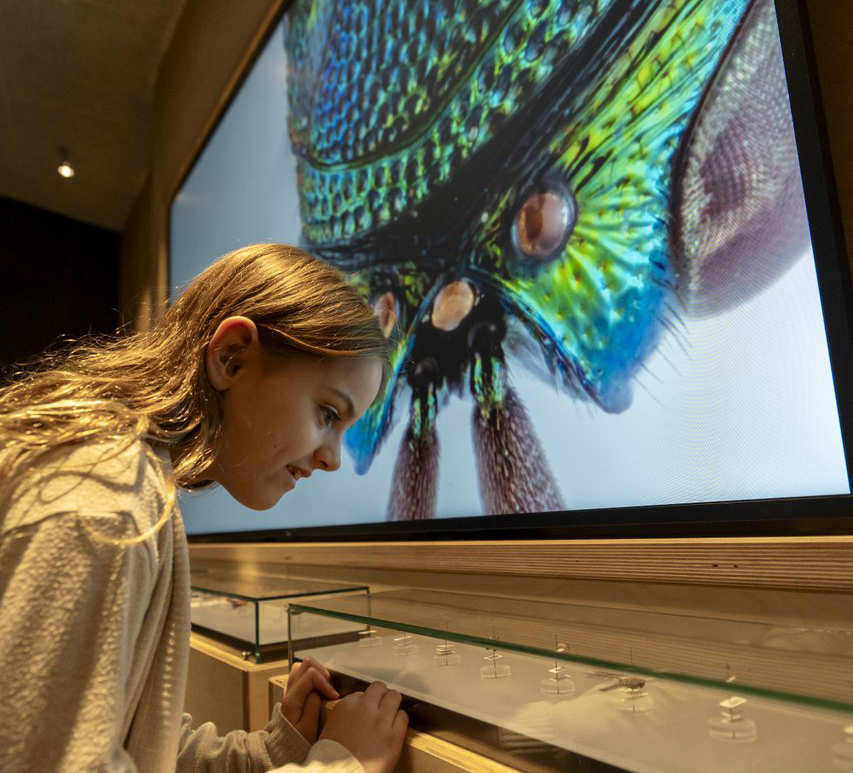 Curator of Vertebrate Zoology
Curator of Vertebrate Zoology
2340 Albert Street
Regina, SK S4P 2V7
Ph: 306-519-5554
Email: ryan.fisher@gov.sk.ca | Google Scholar
Research Interests
Prospective Graduate Students
Publications
Research Interests
Much of my previous research has focused on using well-designed field studies on birds to answer applied questions related to wildlife management in the prairie provinces. My past research has focused on several iconic species in prairie Canada, including Burrowing Owls, Ferruginous Hawks, Sprague’s Pipit, and Sharp-tailed Grouse. My research has focused on understanding how human-impacts to the environment can influence habitat selection, reproductive success, and survival of these species. More recently, I have become interested in understanding how current weather conditions affect demographic rates (survival, reproductive success) of several prairie birds, with the intention of using this information to understand how these species might be impacted by climate change.
Prospective Graduate Students
I strongly encourage anyone that can bring a diversity of viewpoints and backgrounds to the study of vertebrate (and specifically avian) ecology to contact me. I am keen to supervise graduate students that are interested in making a unique and impactful contribution to avian science, while also making that “science” accessible to the public through outreach activities. I typically co-supervise students with Dr. Chris Somers at the University of Regina and have found that the diversity of research in his lab provides an enriching graduate experience.
Funding is always an issue, so if you have a scholarship, that’s great! If not, I have been successful at applying for industrial MITACS scholarships and other funding sources to support graduate students and would encourage you to contact me so that we can discuss how to get you working on some exciting bird research in Saskatchewan!
Prospective students must meet the requirements of the faculty of Graduate Studies and Research and the Biology Department at the University of Regina.
What can you expect from me as a supervisor?
I firmly believe in being a mentor and helping students get to the next stage of their career. I will do my best to support you through your graduate degree. Communication is key to a successful relationship between supervisor and graduate student and I encourage students to participate in regular meetings with me and in regular lab meetings with their colleagues. I have a strong background in statistics, field-study design, grant writing, and publishing research. I will help you with all these aspects of your program. I am also very keen to help students with other non-academic issues such as resume writing and job applications.
Publications
Burda, B., C.M. Somers, K. Conkin, and R.J. Fisher. 2022. Lek habitat suitability for the sharp-tailed grouse (Tympanuchus phasianellus jamesi) on the Northern Great Plains. PloS One 17(4): e0265316 https://doi.org/10.1371/journal.pone.0265316.
Fisher, RJ., A.N. Vass, C.M. Somers, and R.G. Poulin. 2021. Richardson’s ground squirrels (Urocitellus richardsonii) are associated primarily with intermediate levels of grassland, clay loam soils, and human development in Canadian mixed-grass prairies. Canadian Journal of Zoology 99(10):867-875.
Badreldin, N., B. Prieto, and R. Fisher. 2021. Mapping grasslands in mixed grassland ecoregion of Saskatchewan using big remote sensing data and machine learning. Remote Sensing 13(24):4972 https://doi.org/10.3390/rs13244972.
Somers, C.M., U. Goncin, S. Hamilton, M. Chupik, and R. Fisher. 2021. Chasing Northern Pike Esox lucius under ice: long-distance movements following catch-and-release ice angling. North American Journal of Fisheries Management 41(5): 1341-1350.
Davis, S.K., D.A. Kirk, L.M. Armstrong, J.H Devries, and R.J. Fisher. 2020 Shifting from spring wheat to winter wheat: a potential conservation strategy for grassland songbirds in cultivated landscapes? Biological Conservation 245: 108530
Fisher, R.J., B. Sawa, and B. Prieto. 2018. A novel technique using LiDAR to identify native-dominated and tame-dominated grasslands in Canada. Remote Sensing of Environment 218: 201-206.
Martin, T.G., L. Kehoe, C. Mantyka-Pringle, I. Chades, S. Wilson, R.G. Bloom, S.K. Davis, R.J. Fisher, J. Keith, K. Mehl, B. Prieto Diaz, M.E. Wayland, T.I. Wellicome, K.P. Zimmer, and P.A. Smith. 2018. Prioritizing recovery funding to maximize conservation of endangered species. Conservation Letters 11:e12604.
Nixon, A.E., R.J. Fisher, D. Stralberg, E. Bayne, and D. Farr. 2016. Projected responses of North American grassland songbirds to climate change and habitat availability at their northern range limits in Alberta, Canada. Avian Conservation and Ecology 11(2):2 [online] URL: httpt://www.ace-eco.org/vol11/iss2/art2/
Laux, C.M. C.J. Nordell, R.J. Fisher, J.W. Ng, T.I. Wellicome, & E.M. Bayne. 2015. Ferruginous Hawks alter parental behaviours in response to approaching storms. Journal of Ornithology 157:355-362.
Fisher, R.J. T.I. Wellicome, E.M. Bayne, R.G. Poulin, L.D. Todd, & A.T. Ford. 2015. Extreme precipitation reduces reproductive output of an endangered raptor. Journal of Applied Ecology 52:1500-1508.
T.I. Wellicome, R.J. Fisher, R.G. Poulin, L.D. Todd, E.M. Bayne, and D.T.T. Flockhart. 2014. Apparent survival of adult Burrowing Owls that breed in Canada is influenced by weather during migration and on their wintering grounds. Condor: Ornithological Applications 116:446-458.
T.I. Wellicome, L. D. Todd, R.G. Poulin, G.L. Holroyd, & R.J. Fisher. 2013. Comparing food limitation among three stages of nesting: supplementation experiments with the burrowing owl. Ecology and Evolution 3:2684-2695.
S.K. Davis, R.J. Fisher, S.L. Skinner, T.L. Shaffer, & R.M. Brigham. 2013. Songbird abundance in native and planted grassland varies with type and amount of grassland in the surrounding landscape. Journal of Wildlife Management 77:908-919.
R.J. Fisher & S.K. Davis. 2011. Habitat use by Sprague’s pipits in native pastures and planted, non-native hay fields. Auk 128:273-282.
R.J. Fisher & S.K. Davis. 2011. Post-fledging dispersal, habitat use, and survival of Sprague’s pipits: are planted grasslands a good substitute for native? Biological Conservation 144:263-271.
K. Martin, S.K. Davis, R.J. Fisher, & R.M. Brigham. 2010. Song rate variation in Sprague's Pipit (Anthus spragueii). Northwestern Naturalist 91:329-330.
R.J. Fisher, K.M. Dohms, & S.K. Davis. 2010. Removal of nestling radio-transmitters by adult Sprague's Pipit (Anthus spragueii). Journal of Ornithology 151: 749-753.
R.J. Fisher & S.K. Davis. 2010. From Wiens to Robel: A review of grassland bird habitat selection. Journal of Wildlife Management 74:265-273.
Davis, S.K. & R.J. Fisher. 2009. Post-fledging movements of Sprague's Pipits. Wilson Journal of Ornithology 121:198-202.
Boyles, J.G., D.P. Aubrey, B.S. Cooper, J.G. Cox, D.R. Coyles, R.J. Fisher, J.D. Hoffman, J.J. Storm. 2008. Statistical confusion among graduate students: sickness or symptom? Journal of Wildlife Management 72:1869-1871.
Fisher, R.J., & K.L. Wiebe. 2006. Investment in nest defense by Northern Flickers: effects of age and sex. The Wilson Journal of Ornithology 118:452-460.
Fisher, R.J., & K.L. Wiebe. 2006. Breeding dispersal of Northern flickers in relation to natural nest predation and experimentally increased perception of predation risk. Ibis 148:772-781.
Fisher, R.J., & K.L. Wiebe. 2006. Effects of age and sex on survival of Northern Flickers: a six year field study. Condor 108:193-200.
Fisher, R.J., & K.L. Wiebe. 2006. Nest site attributes and temporal patterns of Northern Flicker nest loss: effects of predation and competition. Oecologia 147:744-753.
Fisher, R.J., R.G. Poulin, L.D. Todd, & R.M. Brigham. 2004. Nest stage, wind speed and air temperature affect the nest defence behaviour of burrowing owls. Canadian Journal of Zoology 82:724-730.
Fletcher, Q.E., R.J. Fisher, C.K.R. Willis, & R.M. Brigham. 2004. Free-ranging Common Nighthawks use torpor. Journal of Thermal Biology 29: 9-14.
Fisher, R.J., Q.E. Fletcher, C.K.R. Willis, & R.M. Brigham. 2004. Roost selection and roosting behavior of male Common Nighthawks. American Midland Naturalist 151: 79-87.


